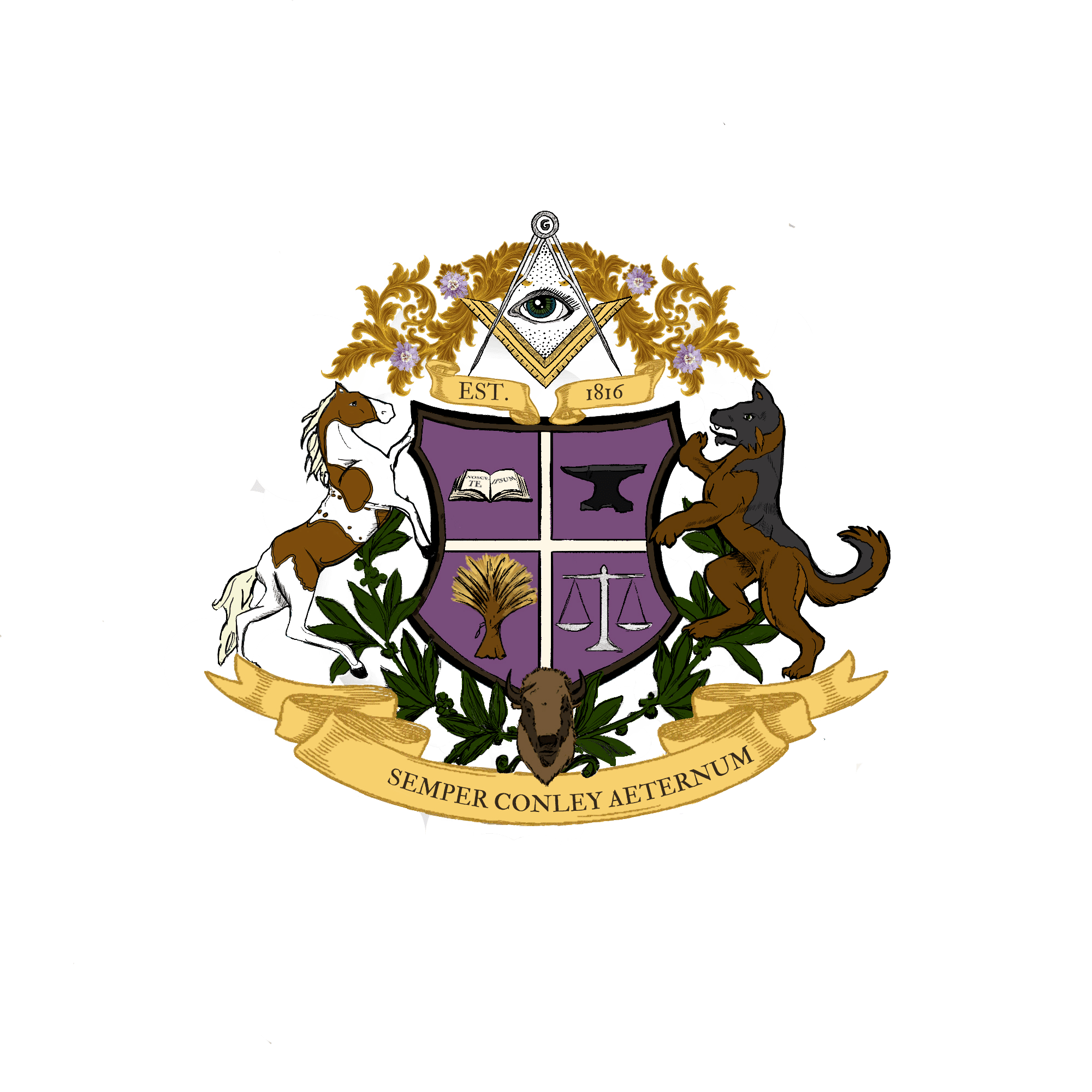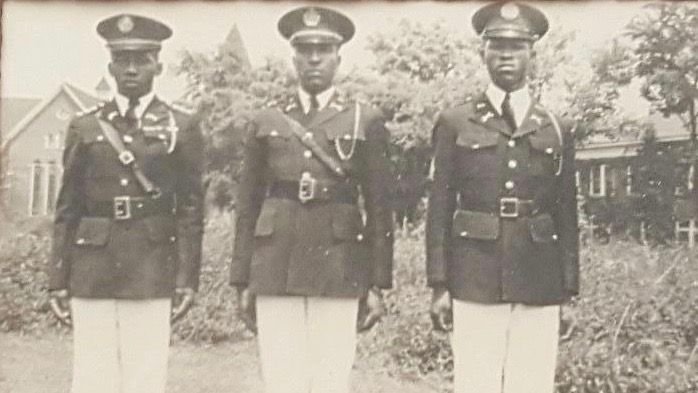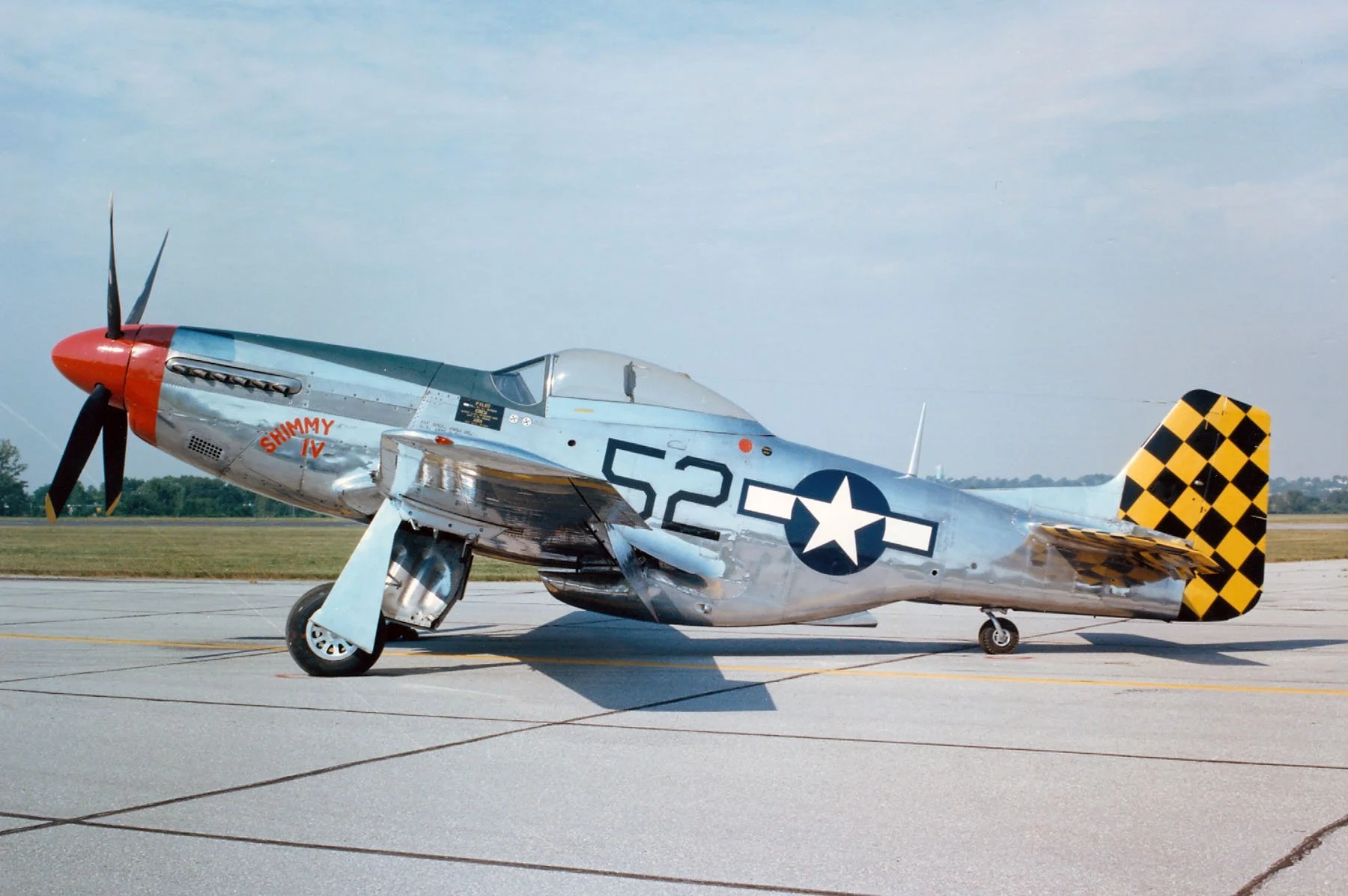BOOKER CONLEY (1923-2019)
Booker Conley was military veteran, pilot, family man, and a cornerstone of the community in Tuskegee, Alabama.
He was pivotal figure in the family’s aviation legacy, playing multiple roles as an architect of airplane hangars and a combat pilot. His commitment to his branch of the Conley Family was extraordinary, and his impact echoes through the generations.
CONLEYS AT TUSKEGEE STANDING IN HONOR OF COLEMAN CONLEY. Left to right, DEXTER L. CONLEY AIR CORP 1942-1947 AAF Buffalo Unit; MONROE CONLEY AIR CORP AAF Buffalo Unit; BOOKER CONLEY AIR CORP 1941-1946, 366th AAF 92nd Buffalo Unit AIR CORP & 1951-1953 92nd Infantry Division .
Booker Conley was shaped by Tuskegee University, and in turn, spent his life in service of the institution.
EARLY YEARS
Conley was born on Jan. 8, 1923, in Sumter County, Alabama. A descendant of James Conley, Booker was the youngest of six, living in Alabama with his siblings and parents. Tragedy struck when Booker was a mere five (5) years old, as both of his parents died of consumption (now known as Tuberculosis or TB). In accordance with his mother's wishes, the children were dispersed among relatives, and Booker moved to Birmingham, Alabama to live with their maternal grandmother, Fannie Pettigrew High.
As he reached adolescence, Booker was sent to live with his aunt and uncle, Bernard and Mary Glenn. While in high school, Booker took classes in Mechanical Drawing, which prepared him to pursue architecture in college. Throughout an unstable childhood in the midst of the Great Depression, his brother Coleman remained Booker’s constant companion. September 1940, at the age of 17, Booker joined brother Coleman at the Tuskegee Institute (Tuskegee University).
Booker Conley in uniform during his time as documented original Tuskegee Airman, and the last of the Buffalo Soldiers. Photo courtesy of U.S. Army circa 1943.
As an architecture major, Booker Conley continued a century-long family carpentry tradition, but the real treasure was that brothers Coleman and Booker created a new tradition with aerospace. Conley learned to fly a plane before he learned to drive a car.
CoLLEGE YEARS 1940-1944
Booker’s older brother Coleman had enrolled in Tuskegee University’s aviation program, joining the war effort. Coleman was training to be a fighter pilot, and inspired Booker. When his older brother was died tragically in an aviation combat exercise, Booker took his place as a pilot in training in the civil pilot training program at the Tuskegee Institute.
When Conley arrived at Tuskegee University In September of 1940 at the age of 17, the institution was being transformed. The Tuskegee Air Army Corp program was being shaped by the vision of a recent graduate from U.S. Military Academy at West Point named Lt. Benjamin O. Davis.
Booker was the beneficiary of perfect timing - once Lt. Davis was appointed the professor of Military Science and the head of the Reserve Officers Training Corps (ROTC), he leveraged the already prestigious, Tuskegee architectural program. Booker decided on architecture as an academic concentration, while training as a pilot. This was Lt. Davis’ vision brought to life - academic rigor and tactical training combined.
Training took place at Kennedy Field on Union Springs Highway in Tuskegee under track star Archie Williams of UCLA fame. Booker was called to active duty as a private soldier on June 9, 1943.
Tuskegee Airmen in 1943, shortly before deployment to Italy.
P-51 Mustang which Booker and his brother before him, learned to fly. The p-51 Mustang was pivotal in the Italian theater of World War 2, enabling America to establish air supremacy.
WORLD WAR 2 1941-1945
After the Pearl Harbor attack in 1941, Conley was chosen as one of 35 to enlist in the first class of the reserve unit in 1942. As a member of Tuskegee University’s first ROTC class, he went straight into combat training.
Conley was called to active duty on June 9, 1943 before completing the ROTC program. He was deployed overseas in November 1944 as part of the 92nd Buffalo Division. He was literally the last of the Buffalo Soldiers.
Booker Conley flew missions over Italy and Northern Africa. He and his brother Coleman Conley are the first known brothers to be documented amongst the authenticated 996 Tuskegee Airmen pilots.
Booker was relieved from active duty as he requested, on November 1946.
POST WAR - A RETURN TO ALABAMA
Conley returned to Tuskegee after World War II. Booker finished college requirements and was awarded a B.S. in Architectural Planning from the University in 1948.
He met and married Dorothy Bell on June 21, 1948, and settled in Tuskegee, Alabama. The couple had four children : Michael, Sidney, and twins- Bernard & Bernadette. The new family settled near the Tuskegee University campus, where they became part of the community in every way. Booker joined, then led, the Buildings & Grounds operations of the university. Booker enjoyed a 50-year-long career at the university from 1948 until 1998. He played a small, but important role in making Tuskegee University into a national treasure as a student, a soldier, and an employee.
A VALUED MEMBER OF THE COMMUNITY
After World War II, Booker returned to Tuskegee and played a central role in the development of the city’s infrastructure.
On January 27, 1970, Booker Conley joined Edward Reid, and William C. Allen as founders of the corporation to manage public utilities for the City of Tuskegee. The Certification of Incorporation of the Utilities Board of the City of Tuskegee was undersigned by Booker Conley, and remains on display to this day.
Booker T. Conley along with his two co-founders, is widely recognized as “the fathers of the Utilities Board of the City of Tuskegee.” Booker envisioned a public utility to operate an electric system, a water works system, and a sewage system for the benefit of all of its citizens. The certificate called for, among other issues, that an electrical system be ran in perpetuity by acquiring, operating, maintaining, improving, and extending an electric system in the City of Tuskegee, and in the territory surrounding the city.
THE LEGACY OF BOOKER CONLEY
Booker Conley’s legacy lives on through many Conleys. His values of service to Country, commitment to Community, and and loyalty to one’s Conley Family, are the bedrock of the broader family ethos. In the earliest days of his childhood with the tragic loss of his parents, and in his last days surrounded by his children and grandchildren, he believed in family.
Civil Engineer Nikki Conley, granddaughter of Booker Conley, and heir to his legacy as an architect and builder of infrastructure.
Micheal Alexander Conley Sr. and Jr. in tribute to Booker Conley in Orlando, Florida.









